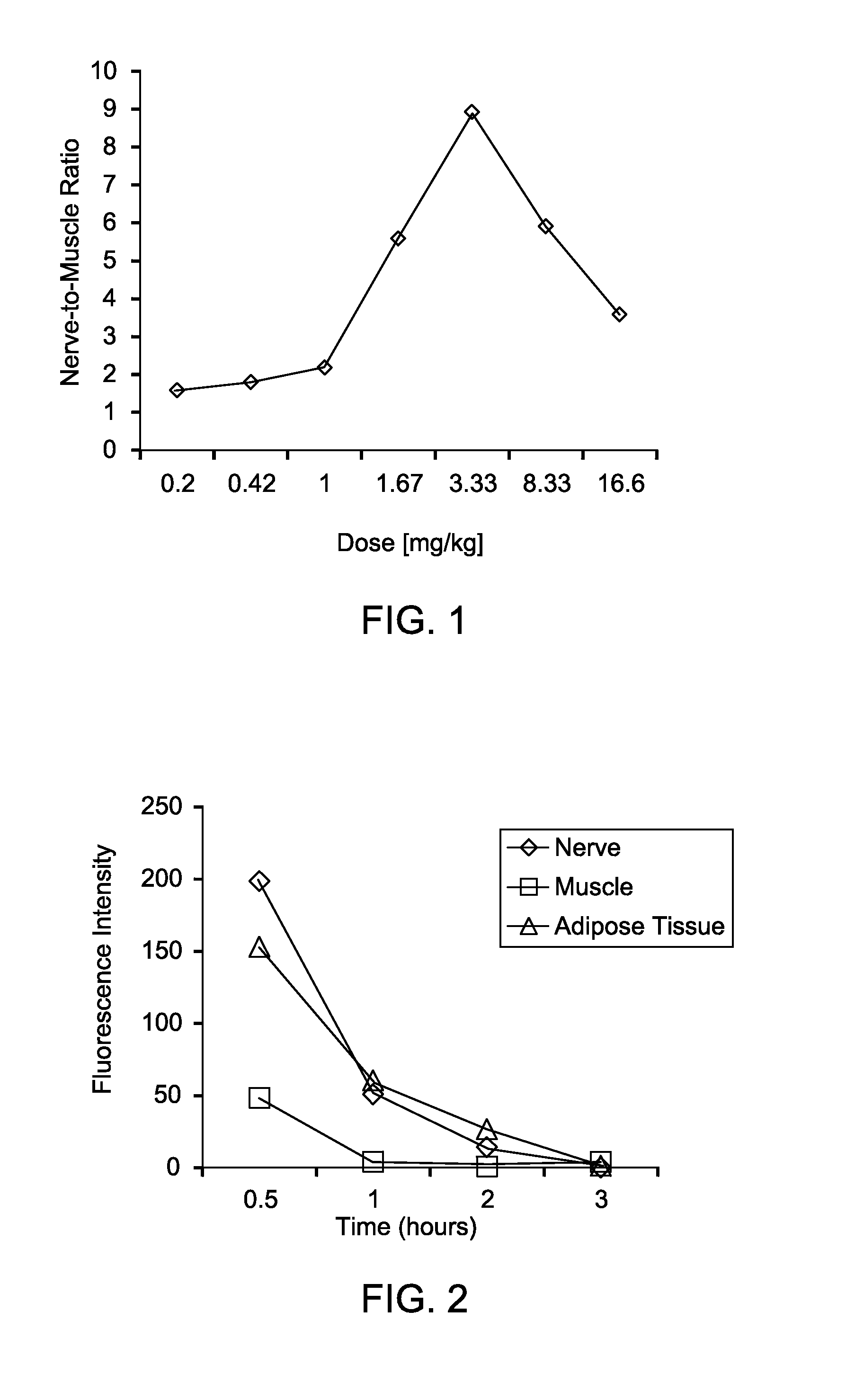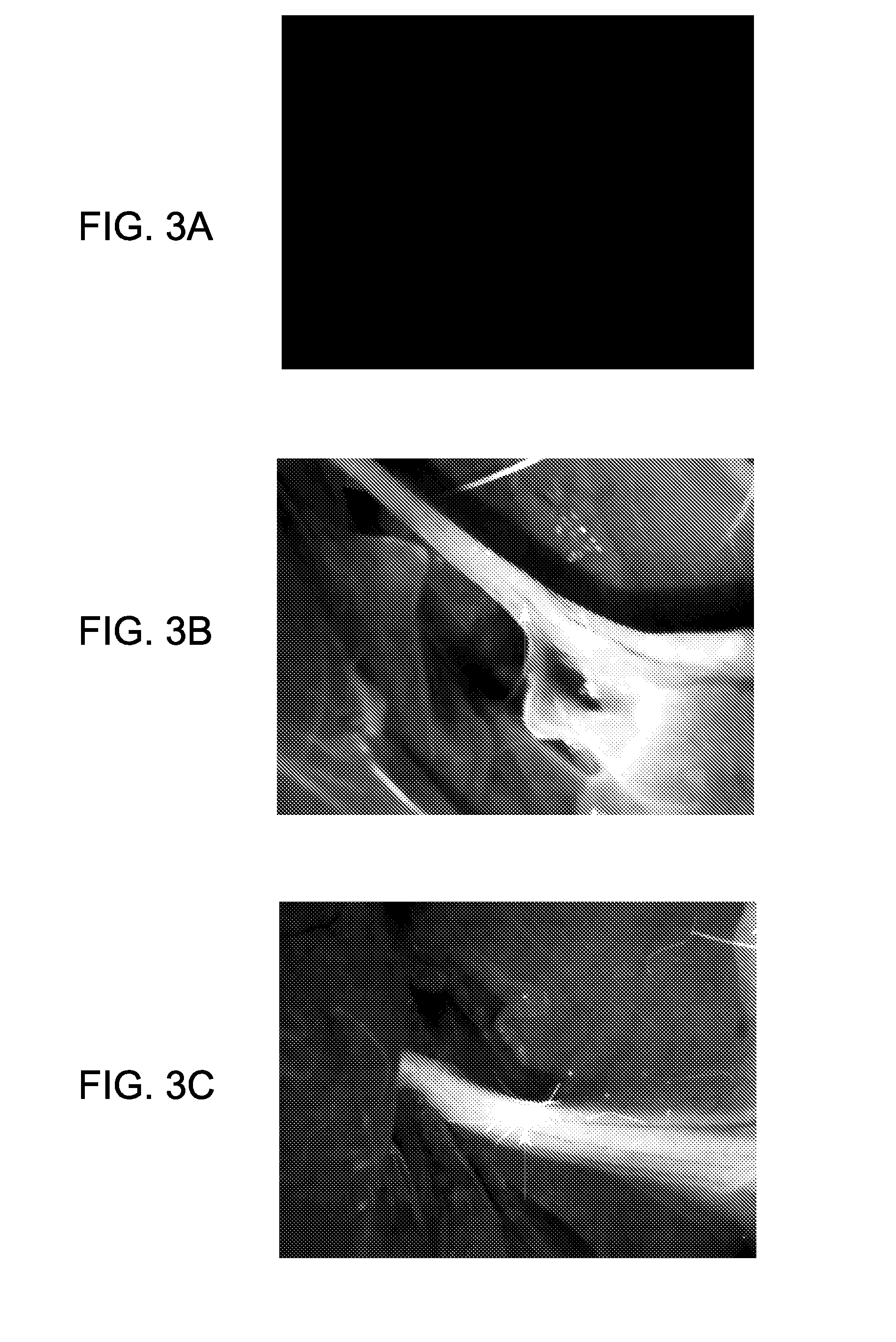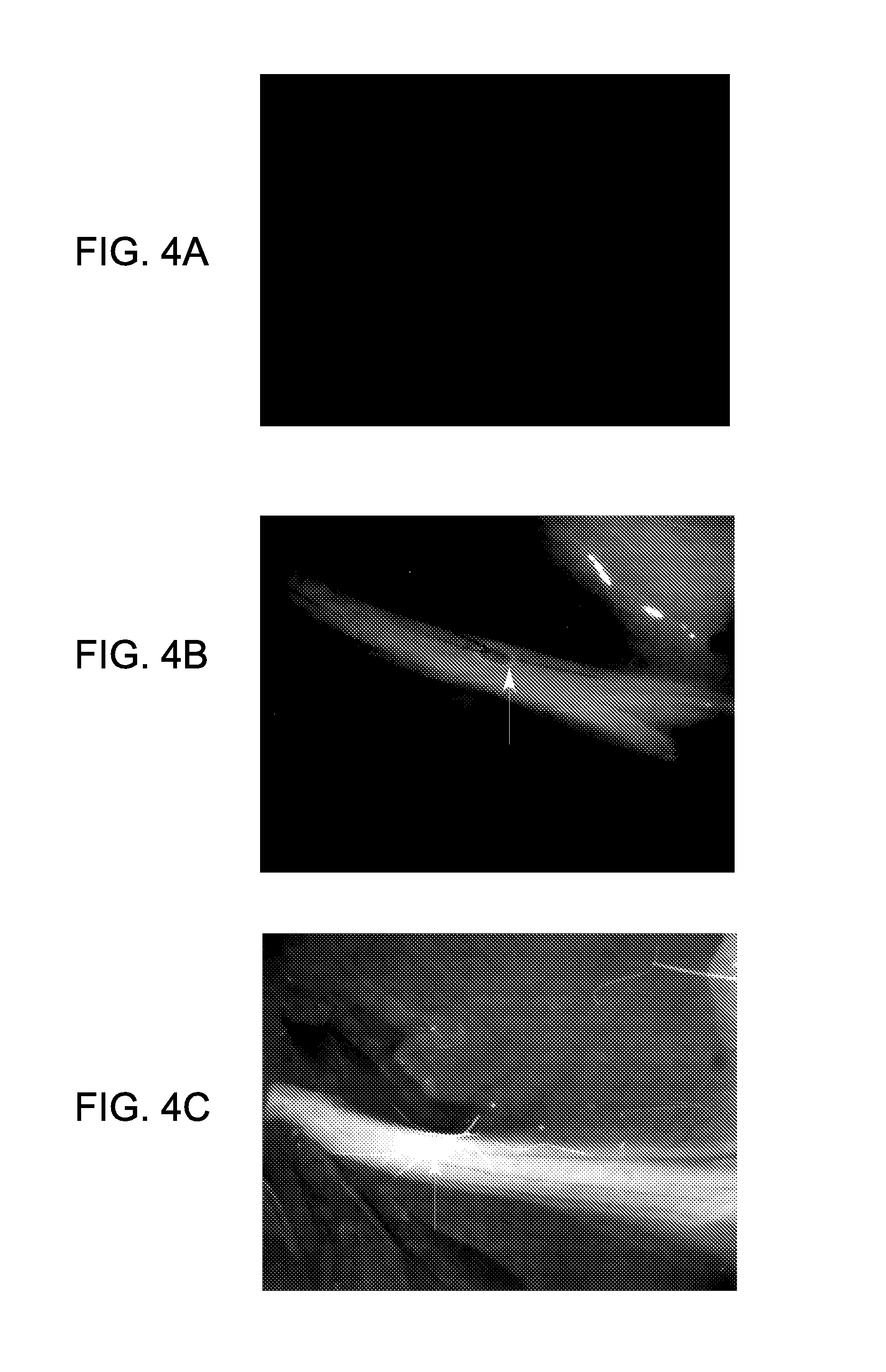Methods of detecting myelin basic protein
a technology of basic protein and myelin, which is applied in the field of methods of imaging nerves, can solve the problems of nerve stimulation, back or neck pain, and ambiguous signals, and achieve the effects of reducing the risk of nerve damage, and improving the accuracy of the signal
- Summary
- Abstract
- Description
- Claims
- Application Information
AI Technical Summary
Benefits of technology
Problems solved by technology
Method used
Image
Examples
example 1
Synthesis of tert-butyl(3-methoxy-4-nitrobenzyloxy)dimethylsilane (5)
[0092]To a solution of 3-methoxy-4-nitrobenzyl alcohol (2.15 g, 11.75 mmol) and imidazole (880 mg, 12.94 mmol) in dry dichloromethane (58 ml) at 0° C. was quickly added tert-butyldimethylchlorosilane in one portion and the mixture was stirred at for 1 hour. LC-MS analysis indicated complete conversion. The solution was washed with ice cold water (50 ml) dried over Na2SO4, adsorbed on silicagel and purified by HPLC with hexanes / ethyl acetate 20-30% gradient to give compound 5 as a light yellow solid (3.3 g, 94%). MS (EI+): 282 (M-Me); 240 (M-tBu); H-NMR (400 MHz, CD2Cl2): 7.85 (1H, d, J=8 Hz) 7.19 (1H, s) 6.98 (1H, dq, J=8 Hz, 0.4 Hz) 4.82 (2H, s) 3.99 (3H, s) 1.0 (9H, s) 0.17 (6H, s). C-NMR (400 MHz, CD2Cl2): 153.96, 150.05, 138.73, 126.32, 117.74, 111.26, 64.65, 57.06, 26.30, 18.90, −4.97.
example 2
Synthesis of 4-((tert-butyldimethylsilyloxy) methyl)-2-methoxyaniline (6)
[0093]A suspension of PtO2 (330 mg) in ethyl acetate (21 ml) was purged with H2 and hydrogenated at room temperature overnight. To this suspension was added, via canula, compound 5 (3.3 g) in 12 ml ethyl acetate and the mixture was stirred at room temperature under H2 for 4 hrs. The catalyst was filtered off through a 0.4-micron membrane and the solvent was removed under vacuum to give the desired product as a crystalline white waxy solid (2.673 g, 85%). H-NMR (400 MHz, CD2Cl2): 6.99 (1H, d, J=8 Hz) 6.78 (1H, s) 6.52 (1H, dd, J=6 Hz, 0.8 Hz) 6.02 (1H, brs) 4.76 (2H, s) 3.89 (3H, s) 0.99 (9H, s) 0.16 (6H, s). C-NMR (400 MHz, CD2Cl2): 151.02, 147.1, 135.23, 122.42, 118.34, 110.86, 67.35, 56.02, 26.20, 19.20, −2.05.
example 3
Synthesis of tert-butyl 4-((tert-butyldimethylsilyloxy) methyl)-2-methoxyphenylcarbamate (7)
[0094]To a solution of amine 6 (180 mg, 0.67 mmol) in THF / water (2.1 ml / 0.52 ml) was added Boc anhydride (162 mg, 0.74 mmol) and NaHCO3 (85 mg, 1.01 mmol). The mixture was stirred at room temperature overnight, then extracted with ethyl acetate, adsorbed on silica and purified by MPLC with hexanes / ethyl acetate 0-20% gradient to give compound 7 (242.4 mg, 98%).
PUM
 Login to View More
Login to View More Abstract
Description
Claims
Application Information
 Login to View More
Login to View More - R&D
- Intellectual Property
- Life Sciences
- Materials
- Tech Scout
- Unparalleled Data Quality
- Higher Quality Content
- 60% Fewer Hallucinations
Browse by: Latest US Patents, China's latest patents, Technical Efficacy Thesaurus, Application Domain, Technology Topic, Popular Technical Reports.
© 2025 PatSnap. All rights reserved.Legal|Privacy policy|Modern Slavery Act Transparency Statement|Sitemap|About US| Contact US: help@patsnap.com



